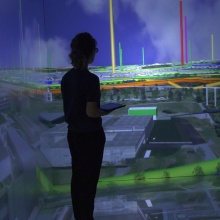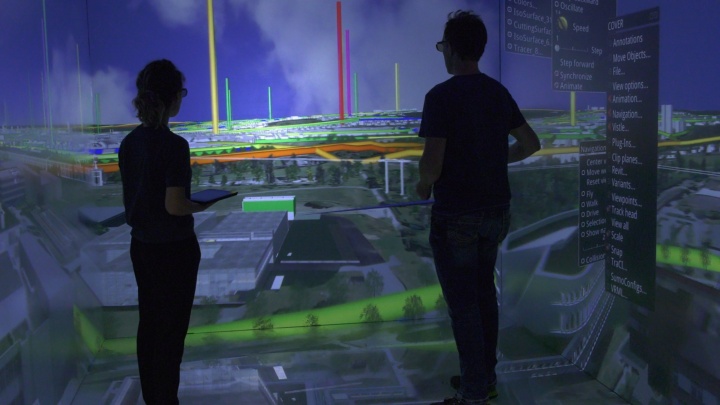What will the energy systems of the future look like? What technical foundations do we need, and how can the upcoming transformation be shaped in such a way that we involve all actors in society? Answers to such questions are to be provided by four research projects funded by the Carl Zeiss Foundation (CZS) as part of the “CZS Breakthroughs – Energy Systems of the Future” program. One of these is based at the University of Stuttgart and is intended to support the necessary processes for the energy transformation and involve all stakeholders in an urban context. The funding amounts to around EUR 5 million over six years.
The interdisciplinary team of the Stuttgart Research Initiative (SRI) “Discursive Transformation of Energy Systems” (DiTEnS) is researching how augmented and virtual reality can be used to directly involve decision-makers in facilitating the energy transformation. To do this, it uses digital twins to map existing urban neighborhoods in terms of energy. That’s because the various situations on site always require individual solutions. Based on this, planned changes such as the installation of solar systems, energy renovation, or even the control of noise emissions can be made tangible, and the repercussions of these on the entire infrastructure can be evaluated in technical, economic, and user-related terms.
The DiTEnS initiative brings together experts in energy systems, building energetics, computer simulation, and social sciences and is led by a collegiate board of directors (speaker Prof. Kai Hufendiek, Institute of Energy Economics and the Rational Use of Energy (IER) at the University of Stuttgart). “The transformation of our energy system into a sustainable and climate-neutral system is a task for both the economy and society as a whole,” says Hufendiek. “If this is to succeed, we need new approaches.” On the part of the University of Stuttgart, in addition to the IER, the Institute of Power Transmission and High Voltage Technology (IEH), the Institute for Building Energetics, Thermotechnology and Energy Storage (IGTE), the High Performance Computing Center (HLRS), and the Center for Interdisciplinary Risk and Innovation Studies (ZIRIUS) are involved. There are also numerous practical partners such as municipalities as well as actors from the administrative sector and businesses.
Three pillars
As the first main task of the DiTEnS initiative, the researchers will develop methods with which the complex situation in the streets and neighborhoods under consideration can be determined. Local options for individual climate-neutral transformation of the study areas will then be determined. Scientists will develop realistic and dynamic simulations that integrate the interdependencies between buildings and infrastructure from the regional level to individual buildings. This approach is intended to illustrate strategies for the improvement of energy efficiency and the flexibilization of demand as well as the use of renewable energies, smart grids, waste heat, electromobility, and modern energy storage technologies for municipalities, owners, and other stakeholders.
The scientists from the visualization department of the High Performance Computing Center Stuttgart (HLRS) led by Dr. Uwe Wössner will use the results of this modeling to develop digital twins of the buildings and energy systems in their urban context. Digital twins are highly detailed, multi-scale models of cities or regions that simulate both visible and invisible features of the environment (e.g., particulate matter, noise, and air currents). Viewed in an interactive 3D visualization system such as the CAVE of the HLRS, they simplify the representation of complex systems such as the energy and building infrastructure of an urban region. For example, it is possible to understand how changes towards achieving climate neutrality – both locally and in the overall system – will affect buildings, streetscapes, and neighborhoods as well as the interconnected operation of these in the overall system.
In order to achieve a successful energy and heat transformation, the DiTEnS initiative also pursues a social science perspective together with the various stakeholder groups to develop recommendations on how to build bridges between technical possibilities and their individual use. These are crucial for the success of the transformation. The DiTEnS initiative promotes transdisciplinary dialog in order to reduce conflicts between the different requirements of all stakeholders in the energy transformation and to promote common perspectives.
Expert Contact:
Prof. Kai Hufendiek, University of Stuttgart, Institute of Energy Economics and the Rational Use of Energy (IER), Tel.: +49 711 685 87801, E-Mail



